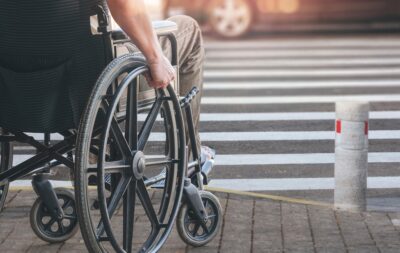
The length of time necessary to settle a pedestrian accident claim is not a set duration. It depends upon what happened, how it happened, and what resulted from it happening. It also depends on the quality of the information supporting the claim and how convincingly the information can be presented to the party the claim is made against.
Understanding the personal injury claims process and being able to take the accident facts and develop a winning strategy helps pedestrian accident claims get settled fairly and in the least amount of time. The personal injury law firm of John Foy & Associates has been obtaining praiseworthy results for injured clients in Georgia for 25 years.
Issues that Affect the Length of Time It Takes to Settle a Pedestrian Accident Claim
No two claims are ever exactly alike. The facts of any particular accident will determine which factors may impede an efficient settlement. Below are some of the more common factors that affect how quickly a settlement can be reached.
The Parties Can’t Agree on Fault
A settlement cannot be reached until both sides say yes to the same things. In pedestrian accident claims, the fault for causing the accident is an issue that can be a frequent basis for disagreement. Fault for causing the accident has a direct relationship to the amount of money an insurance company will have to pay.
Fault is apportioned among all responsible parties. If an injured party is found to have some fault for causing an accident, any recovery awarded for the injuries will be reduced by a corresponding percentage. However, if the percentage of fault is 50% or more, the injury claim will be denied in Georgia.
Both parties have the incentive to shift blame onto each other. When fault for the accident cannot be agreed upon, settlement may not occur at all, and the matter may have to proceed to trial.
Severity of Injuries
Generally speaking, the more severe the injuries from an accident, the longer a claim can take to settle. Severe injuries take longer to heal, and the long-term effects can take longer to discover. Trying to settle a claim too quickly when there are significant injuries can leave an injured person without adequate compensation for damages.
In addition to compensation for medical expenses incurred as a result of the injuries, a pedestrian is allowed to recover compensation for how the injuries impact activities of daily living and other pleasures of life. These kinds of damages are not always apparent right away, and it may take weeks, months, and sometimes years to understand the complete consequences of the injuries.
Negotiation Skills
Negotiation is necessary to settle a pedestrian accident claim. Both sides want what they want, and both sides must give a little if an agreement is to be reached. The goal for each side is to get the most out of what is wanted and to give up as little as possible to get it.
Good negotiators are creative problem solvers oriented toward getting the desired results. A good negotiator knows how to identify potential legal issues and confront them in the ways most favorable to the position being advocated.
Thorough preparation helps claims settle more efficiently and with better results for the claimant. Persuasive knowledge of the applicable laws, the facts of a particular accident, and the nature and extent of the claimed injuries are essential to successful claim negotiations.
Get the strong arm
Why a Pedestrian Might Be at Fault for an Accident
A popular myth, pedestrians do not always have the right-of-way. Pedestrians must take certain precautions when traveling on or across a roadway to help ensure their safety. Pedestrians are required to yield to vehicles in the following road-crossing situations:
- When a vehicle is approaching too quickly to stop if a pedestrian enters the roadway
- When there is a designated pedestrian overpass and a pedestrian chooses not to use it
- When a pedestrian crosses the road between traffic-controlled intersections
- When a pedestrian crosses a roadway without traffic controls
Lack of visibility can also be an issue in pedestrian accidents. For instance, it is more dangerous for a pedestrian to be on a roadway in the dark when it is harder for motorists to see clearly. A pedestrian may contribute to lower visibility by wearing dark instead of light or reflective clothing.
How Pedestrians Get Injured by Vehicles
There were 18 pedestrians killed every day in the US in 2020, according to the National Highway Transportation Safety Administration (NHTSA). Most pedestrian fatality accidents occur when a single passenger vehicle strikes a pedestrian with its front end. Pedestrians hit by large trucks or buses tend to collide with the side or back end of the vehicles.
Vehicle speed at impact is an important factor in the severity of pedestrian injuries. A pedestrian may be knocked to the ground or may be thrown on top of or over a vehicle. Trauma to the head, torso, and legs is common.
Trauma to the head can mean damage to the brain resulting in significant and permanent mental and physical impairment. Trauma to the spine can lead to damage to the spinal cord and loss of use or control of body parts. Broken bones and other internal damage to tissues and organs can occur from the initial impact or a secondary fall onto or into another hard surface.
A Persuasive Argument Gets Better Results Faster
Pedestrian accident claims often start with an insurance company. If the insurance company represents the driver who hit the pedestrian, the company will be looking for ways to discount the validity or value of the claim. Anticipating the insurance company’s responses and overcoming potential issues before they arise can prevent unnecessary delays in the process and strengthen the credibility of an injury claim.
A personal injury attorney from John Foy & Associates is familiar with insurance company claim settlement practices and knows how to take the facts of your pedestrian accident and get the best possible settlement in the least amount of time. In Metro Atlanta, contact John Foy & Associates for a free and confidential consultation.
(404) 400-4000 or complete a Free Case Evaluation form





